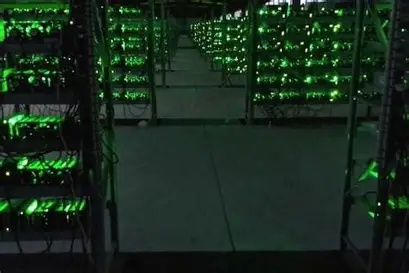In the dynamic world of cryptocurrency mining, maintaining uninterrupted operation of ASIC miners is not just advantageous—it’s essential. The relentless computation required to validate transactions on networks like Bitcoin (BTC) and Ethereum (ETH) means any downtime directly translates to lost revenue and diminished mining rewards. Mining farm operators, whether managing sprawling facilities or smaller-scale operations, must adopt proactive strategies to preserve machine health and guarantee optimal uptime.
ASIC miners, specifically designed for the efficient execution of cryptographic hashing algorithms such as SHA-256 for BTC or Ethash for ETH, boast impressive processing power tailored for their respective currencies. However, the extreme workloads place immense stress on hardware components. Heat buildup, dust accumulation, power fluctuations, and firmware glitches can quickly degrade performance or cause unexpected breakdowns. Regular preventive maintenance—ranging from thorough cleaning to precise firmware monitoring—is imperative to head off these common pitfalls.

Miners invested heavily in rigs often overlook the value of comprehensive diagnostics. Modern mining machines integrate sensors that track temperature, hash rate, and power consumption in real-time. Leveraging sophisticated monitoring dashboards allows operators to detect anomalous patterns indicative of malfunction. For example, a sudden drop in hash rate might signal deteriorating mining chips or ventilation issues. Swift intervention reduces risks of catastrophic failure and extends hardware lifespan, especially crucial for brands backing their ASIC units with limited warranties.
Beyond standard diagnostics, embracing predictive maintenance through AI analytics is an emerging frontier. Machine learning models trained on telemetry data can forecast failures before they occur, enabling teams to schedule repairs or part replacements proactively. This strategy is especially valuable in large mining farms where managing thousands of miners manually is impractical. The investment in AI pays dividends by maximizing average operational efficiency and diminishing costly downtime periods.

Environmental control also plays a pivotal role in ASIC upkeep. Mining installations in inhospitable climates must prioritize temperature and humidity regulation. Excessive heat accelerates component wear; conversely, dry conditions reduce corrosion risks but may introduce static electricity hazards. Advanced HVAC systems, coupled with strategic airflow design, ensure thermal balance. Regular audits of filtration systems prevent dust ingress, which historically plagues miners targeted at cryptocurrencies such as Dogecoin (DOG) and Bitcoin. The balance between cooling efficiency and energy consumption often defines profitability margins for miners.
Firmware and software updates cannot be neglected. Blockchain networks undergo periodic protocol changes—sometimes impacting mining algorithms or network difficulty. Compatible firmware updates align miners with the latest protocols, enhancing both security and performance. However, these updates should be implemented judiciously: rigorous testing in isolated setups avoids downtime caused by buggy releases or compatibility issues. Mining machine hosting providers especially benefit from implementing automation pipelines that gracefully handle these upgrades without disrupting their hosted clients.
Another less-discussed yet critical aspect involves power management. Stable electricity supply is paramount and often vulnerable to unforeseen events. Incorporating uninterruptible power supplies (UPS) and using surge protectors shield delicate ASIC components from voltage spikes or brownouts. Hosting centers located near renewable energy sources—such as hydroelectric or solar plants—can also mitigate costs and environmental footprint, appealing to modern miners driven by sustainability concerns.
Lastly, cultivating a maintenance culture within mining operations accelerates response to emerging issues. Training staff to recognize subtle signs of hardware stress, maintaining meticulous logs of repair history, and establishing rapid communication protocols enhance overall resilience. Whether mining BTC, ETH, or DOG, whether managing individual rigs or wholesale mining farms, the fusion of human vigilance and technological advancement empowers seamless continuity.
In sum, avoiding downtime in the ASIC mining ecosystem demands a multifaceted approach. From real-time monitoring and AI-driven predictions to environmental optimizations and vigilant firmware management, every layer fortifies the stability of mining ventures. As cryptocurrencies evolve and competitive thresholds rise, those who prioritize proactive ASIC maintenance position themselves at the forefront of profitability and innovation in this exhilarating digital arena.
Leave a Reply